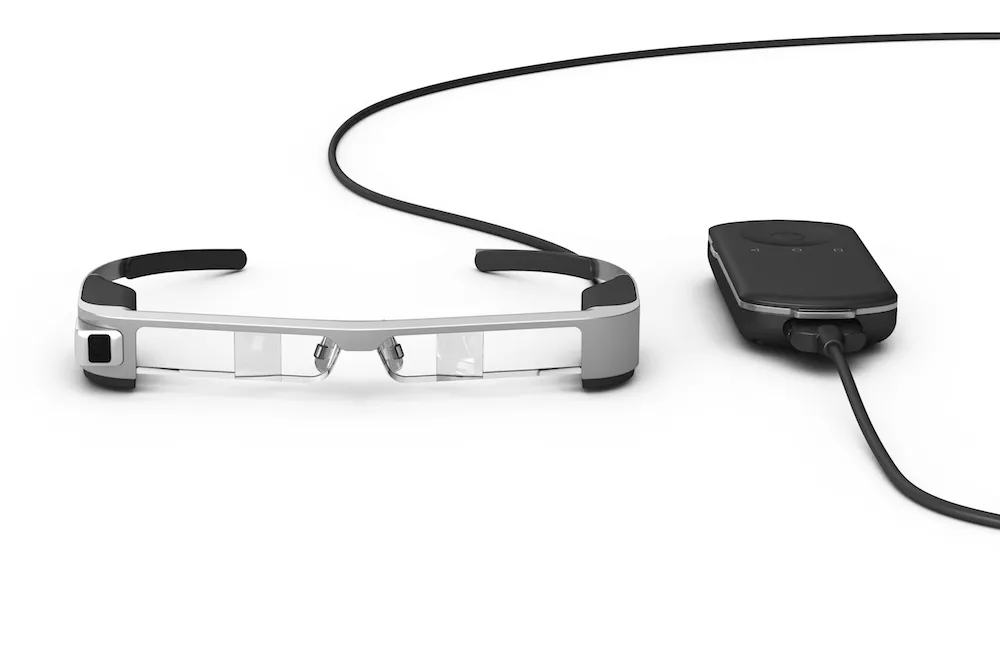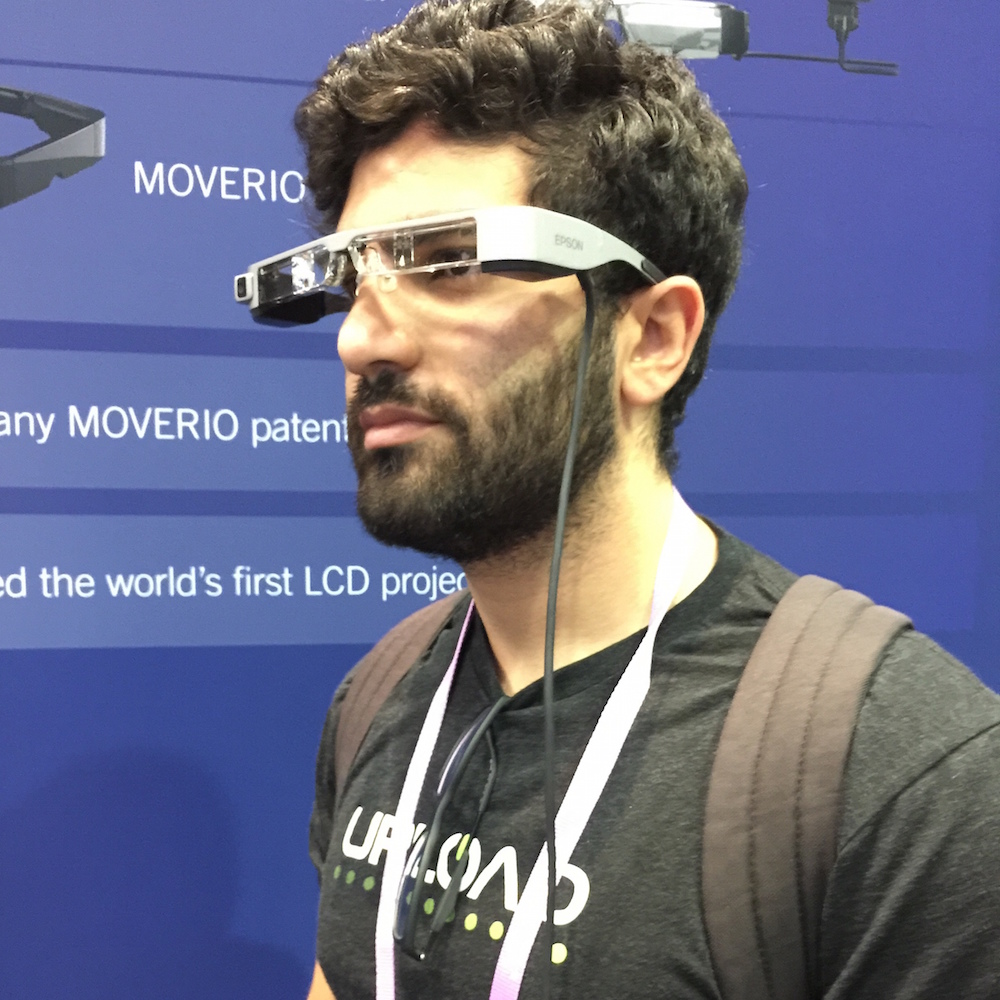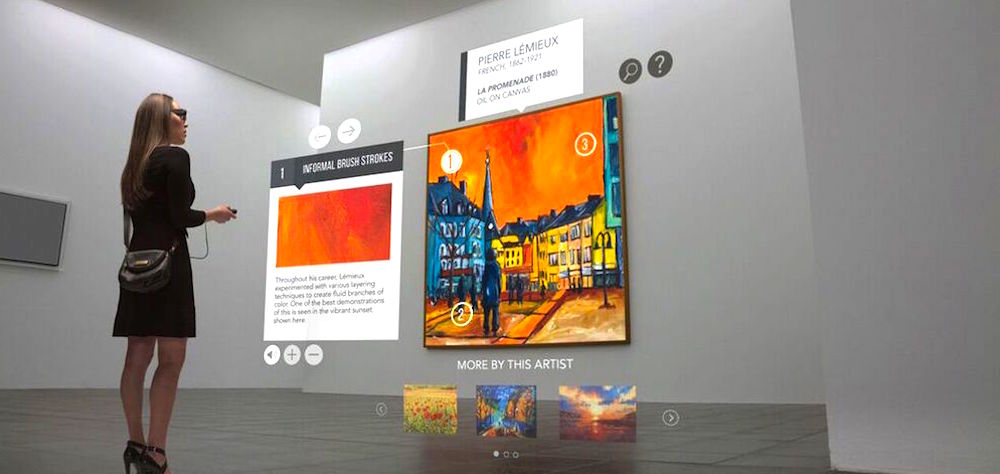Epson, the company behind one of the most popular brands of projector displays on earth, has been working for years on an even more advanced visual technology: augmented reality headsets.
During this year’s Augmented World Expo, Epson showed off their Moverio BT-300 AR headset. These glasses feature a bright and crisp OLED display, IMU head-tracking capabilities, and a very lightweight design. Epson is targeting a Q4 Release for the glasses for “around $750”, according to a company representative.
The glasses are powered by a quad core Intel Atom X5 processor and they run on Android 5.1. As such, the headset is capable of running (unofficial) Android apps, which makes the development process relatively easy. The BT-300 also contains a 5 megapixel front-facing camera but the main improvement Epson made to the system is its form factor. The BT-300 now weighs in at right around 65 grams.
The secret sauce keeping the BT – 300’s form factor so small is its separated processor and power pack. This separate black box – about the size of a small cell phone – is connected to the glasses via a wire. The pack houses all of the processing, battery, and inputs for the BT-300.
What is particularly impressive about the BT-300 is the quality of its image. Having an OLED waveguide display is new in the AR field, and is a welcomed improvement over the DLP projected waveguide displays we’ve seen in the past.
Up until now, most of these “Augmented Reality” displays have been nothing more than a projection from a phone or a tablet that translates straight to your eyes with no real connection to the reality around you. The BT-300, however, has included head-tracking for more immersive applications. Another big plus for glasses wearers is Epson’s inclusion of multiple sets of prescription lenses and customized nose guards.
Unlike Microsoft’s HoloLens or Meta’s Meta 2, the Epson headsets don’t truly augment your world in the same way. The former devices are meant to encroach upon that “every day” wearable market for a mass market while Epson is focused primarily on specific verticals and carefully targeted applications. Company reps confirmed that there are some game or entertainment applications being developed, but this device is mostly about satisfying certain very practical needs.
The BT-300 is targeted toward specific niches and enterprise applications. Drone operators have taken a liking to it due to its transparent display – which complies with FAA regulations. Other third-party applications being shown at AWE included a navigation program and a subtitling experience. Epson is finding most of its buyers at the enterprise level.
Corporations are purchasing Epson smart glasses to increase productivity and streamline efficiency. Warehouse pickers was one particularly cited high-volume usage case for these systems with reported increases in productivity of 20 percent.
AR is still an emerging market that is taking time to gain serious traction for corporations. When asked how many pairs of AR glasses Epson has sold, a company representative was hesitant to disclose full numbers but did indicate that the “we’re not talking millions here.”
Unknown to most, Epson released its first pair of AR glasses, the BT-100, back in 2011. This device was mostly focused on consuming videos on the go, and having basic web browsing capabilities through Android 2.2. A couple of years later, in 2014, with the market still vacant of major AR players, Epson released the BT-200 for developers/consumers as well as a more rugged BT-2000 for enterprise with a fully transparent display, a lighter form factor, and a forward facing camera.





























